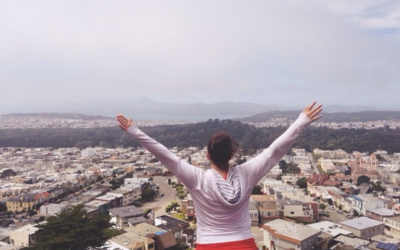Today is day two of Passover.
I spent the last two nights at family Seders celebrating the Jews’ brave escape from the evil Pharoah. I can’t even tell you how many times I have had to tell the story of Passover to friends and strangers in order to explain why I’m eating “weird” food for eight days and going to big family gatherings. Surprisingly enough, I don’t mind explaining. The mere fact that people are curious about religions different than theirs excites me. However, the fact that people, at age 22ish, don’t know what big Jewish holidays are, is sad. But that’s a topic for another post.
So here’s my explanation (usually a bit shorter):
The story of Passover is found in the Book of Exodus in the Torah. Around 3000 years ago, the Israelites were enslaved by the Egyptians under the rule of the Pharaoh. Moses, who at the time was just a Jewish shepherd, was instructed by God to go to Pharaoh and demand that the Jewish people were set free.
Moses begged Pharoah to “let my people go” but was ignored. Moses warned the Pharaoh that God would send severe punishments to the people of Egypt if the Israelites were not freed. However, the pharaoh didn’t believe Moses and ignored him again. God did, in fact, unleash the 10 plagues on the Egyptians.
The 10 Plagues in Order of Occurrence
1. Blood
2. Frogs
3. Lice
4. Wild beasts
5. Blight (cattle disease)
6. Boils
7. Hail
8. Locusts
9. Darkness
10. Slaying of the first born
In Hebrew, the holiday is called Pesach, which means “passing over.” The Pharoah did not believe that these plagues were, in fact, from God until the tenth plague – slaying of the first-born. In order to encourage the Pharaoh to free the Israelites, God’s tenth plague intended to kill the first-born. To protect themselves, the Israelites were told to take lamb’s blood and mark their doors so God could identify which homes were Jewish and “pass over” them.
After Pharaoh finally took Moses seriously, he set the Jews free. The Jews jumped at the freedom and left their homes so quickly there wasn’t enough time to bake their breads for the long journey ahead. Instead, they packed dough to take with them. As they journeyed through the desert, they strapped the dough to their backs and the sun cooked it into hard crackers called Matzah. This is why we eat Matzah instead of bread during Passover.
Immediately after the escape of the Jews, the Pharaoh had second thoughts and sent his army after them. The Jews reached the Red Sea and were trapped – the sea on one side and the army on the other. Then, as many people know (from the beloved movie Ten Commandments), a miracle occurred. Moses had utmost faith in God and parted the Red Sea.
There are many variations to this part of the story; Moses just stood there and the sea parted, he put his staff in the sand and the sea parted, but my personal favorite is this: Moses, having faith in God, walked into the sea. God wanted to test his faith and loyalty to the fullest extent. Moses kept taking steps deeper and deeper into the sea until all but the top of his head was completely submerged in the water. Moses was about to drown. It was then, after Moses’ faith had been determined, that God parted the Red Sea so the Israelites could cross to the other side. As soon as the Jews reached the other side, the sea closed, drowning Pharaoh’s army behind them.
It was now that the Jews could celebrate their true freedom from Egyptian rule. And Miriam sang with her timbrels (my Torah portion from my Bat Mitzvah).
Passover celebrates the history of enslavement the Jews endured and the freedom they finally reached. The first two nights of the eight day holiday begin with Seders. These are basically just big meals with all of the family.
For Orthodox Jews and some reform, leading up to the first night of Passover, the home is cleaned and cleared of all yeast foods, called hametz. The rules surrounding Passover are strict, which, I assume, is why I get so many questions. Trust me, it is very difficult not to be able to eat anything with yeast – no beer, no alcohol, no bread. It’s tough.
But for some, it’s even harder. Kitchen utensils and dishware normally used in the home are not be used during Passover. Everything must be “kosher for Passover” which limits food options greatly. This is to commemorate the hardships the Jews faced nearly 3000 years ago.
I won’t go into great details about the Seder – the tradition generally is to bring strangers or people in need to our Seders in order to teach and provide food for everyone. So, go to a Seder!
Passover is a very important holiday for the Jewish people. It represents freedom from slavery and marks the beginning of spring.
Our family celebrates Passover every year – next year in Israel 🙂






Nice recitation of the story behind the celebration of Passover. You ought to look into the concept that Passover is one of a couple “New Year” celebrations for Jews, based on the thought that you couldn’t have a “Jewish Calendar” while enslaved, so the Jewish calendar really begins when they became a free people. If I recall correctly the Torah portion on Passover talks about it being a new year, or “on the first day of the new year” or something like that. Check it out!
You know so many interesting infomation. You might be very wise. I like such people. Don’t top writing.
Your site is worth beeing in the top cause it contains really amazing information.